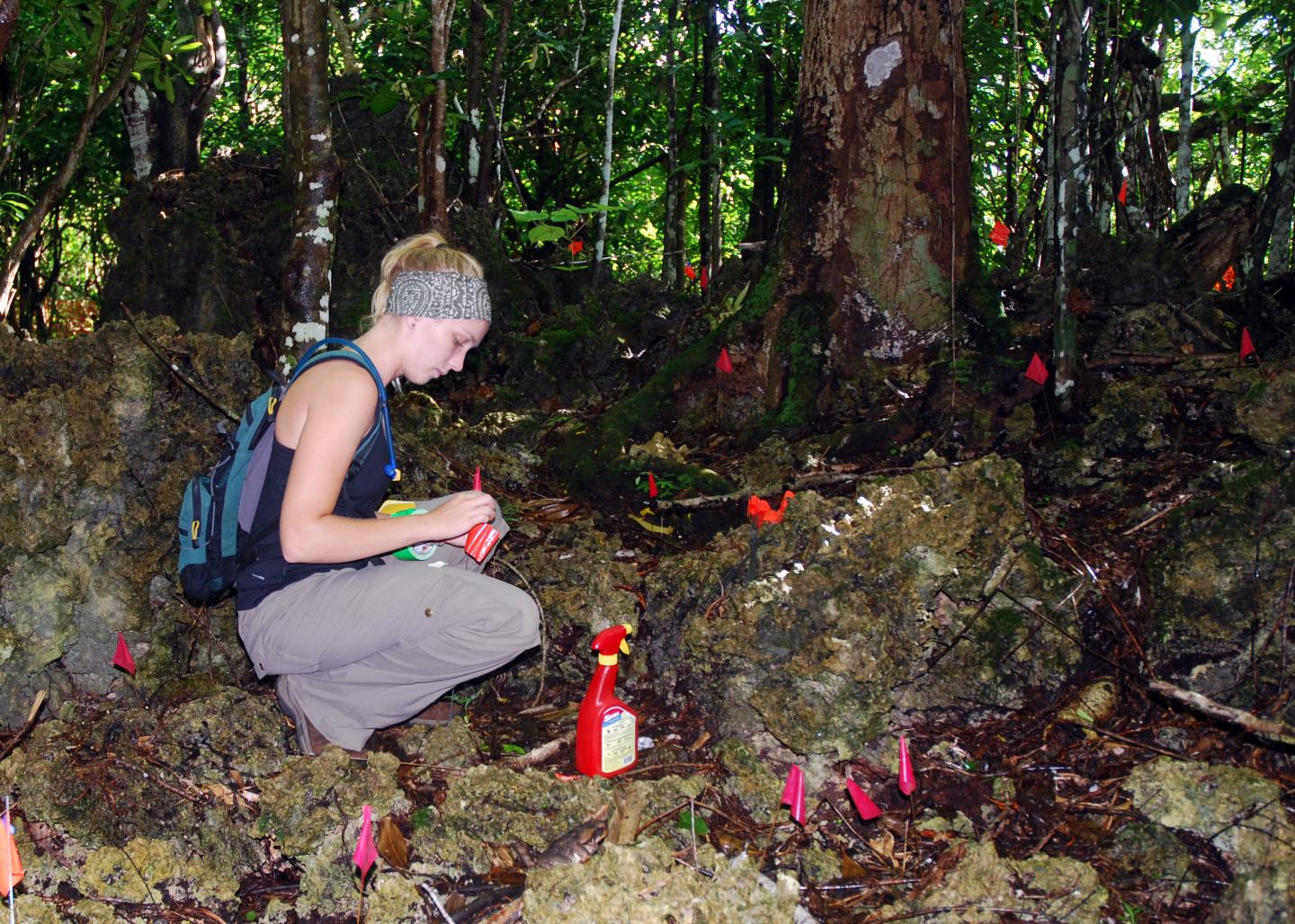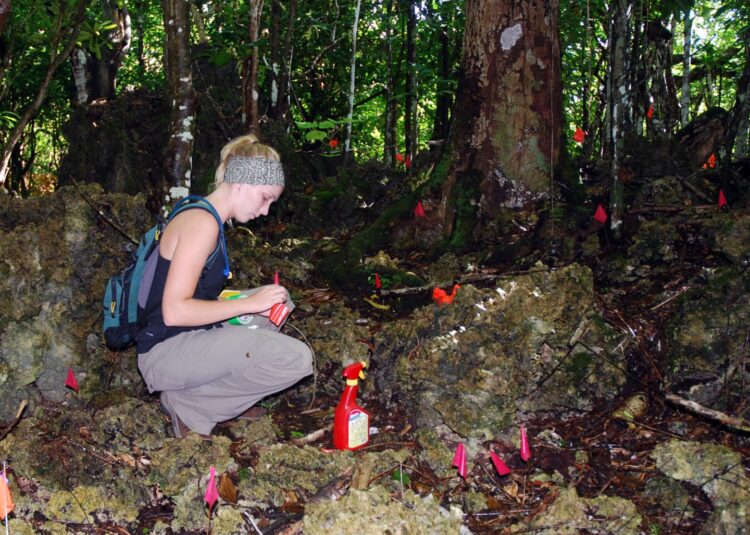University of Guam review finds conservation projects have lacked publishable results

Credit: University of Guam
A University of Guam review of published research on the critically endangered Serianthes nelsonii tree has revealed a reason why the population of the trees continues to be endangered despite a long history of funded conservation projects and a national recovery plan implemented 26 years ago. The review article, co-authored by biologists of the Plant Physiology Laboratory of UOG’s Western Pacific Tropical Research Center, was published on March 2 in Horticulturae journal (doi:10.3390/horticulturae7030043).
“A main message of our paper is that decision-makers from funding agencies limit conservation success when practitioners with no demonstrable publication history are funded,” said co-author Benjamin Deloso. “This is essentially what happened for decades with the Serianthes nelsonii funding.”
Lack of appreciable research to inform management decisions
With a global natural population of less than 50 mature trees and an endemic range of only two small tropical islands in the Mariana Islands, the extinction risks for the Serianthes nelsonii are acute.
The article references a national recovery plan for the tree, published in 1994, that explicitly called for research to increase relevant knowledge. Then no publishable research was generated for the first 21 years of the recovery plan’s implementation.
“Critically endangered plant species with extremely small populations are among the most difficult species to study,” said co-author April Cascasan. “Researchers must rely on limited numbers of replications and non-destructive experimental approaches to do the best they can to answer urgent research questions.”
The authors say the Serianthes nelsonii case study demonstrates the importance of adaptive management. Management decisions in any discipline need to be informed by relevant knowledge. But when an endangered species has not received appreciable historical research, that knowledge does not exist. In these situations, reducing extinction risk requires that conservation programs adapt to a learn-as-you-go approach.
“In other words, there is no species-specific playbook in the beginning,” Deloso said. “Practitioners need to write the playbook as the status of knowledge can be recalibrated with each successive grant or contract.”
These realities are at the root of why international conservation experts advocate for inclusion of published research scientists in funded conservation projects. When this is done, implementation of the conservation measures will include experimental and observational approaches that generate new knowledge to improve subsequent decisions.
Much learned in a short amount of time
In an effort to fast-track knowledge of the tree’s extinction risks and inform conservation protocols, the Plant Physiology Laboratory at the University of Guam has generated a flurry of publications in the past five years.
Additionally, their systematic review of prior research has illuminated the urgency of addressing plant mortality, in particular, in future conservation research.
Since the national recovery was implemented 26 years ago, the natural mature tree population has declined 60%. Similarly, the numerous projects that were funded in that time to propagate plants and increase the tree population were characterized by extensive post-transplant mortality. This widespread tree death in natural forest settings has occurred without the inclusion of research scientists to observe the plant behavior, so the reasons for the ongoing mortality remain elusive.
One of UOG’s first discoveries was that regeneration potential of the tree is considerable, a finding that refuted the long-standing belief that inadequate regeneration was among the defining extinction risks.
“It was gratifying to be involved in our choreographed trials designed to understand the seasonal aspects of seedling emergence and longevity traits,” Cascasan said. “The decades-long belief that regeneration failure was a conservation limitation was inaccurate, as we revealed that recruitment from the seedling to the sapling stage was the primary limitation to population growth.”
Deloso said these results on nursery and physiology issues are indicative of what can be learned in a short amount of time.
“The same can be achieved for the remaining unanswered questions if a change in methods is implemented, such that published academic scientists begin to be included in all funded conservation projects,” he said.
###
Further Reading:
Marler, T.E., C. Musser, A.N.J. Cascasan, G.N. Cruz, B.E. Deloso. 2021. Adaptive Management Lessons for Serianthes nelsonii Conservation. Horticulturae 7: 43. doi:10.3390/horticulturae7030043.
Media Contact
Jonas Macapinlac
[email protected]
Related Journal Article
http://dx.





